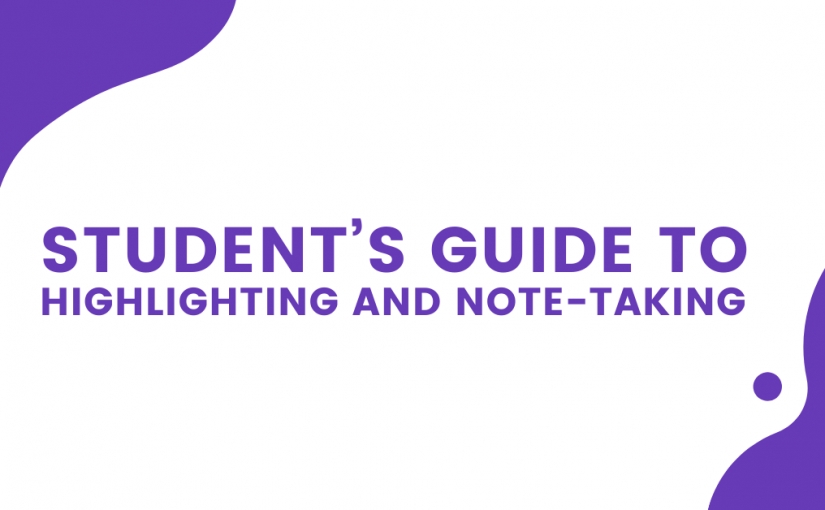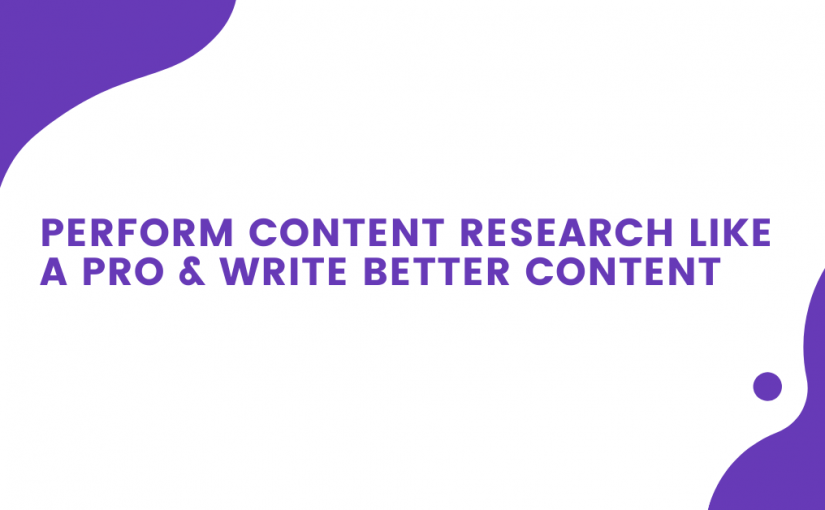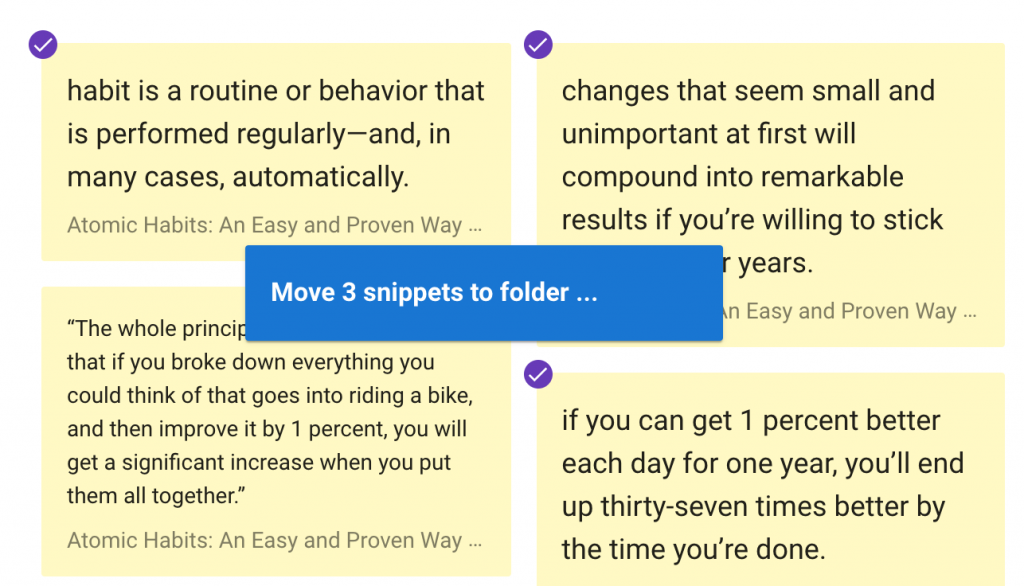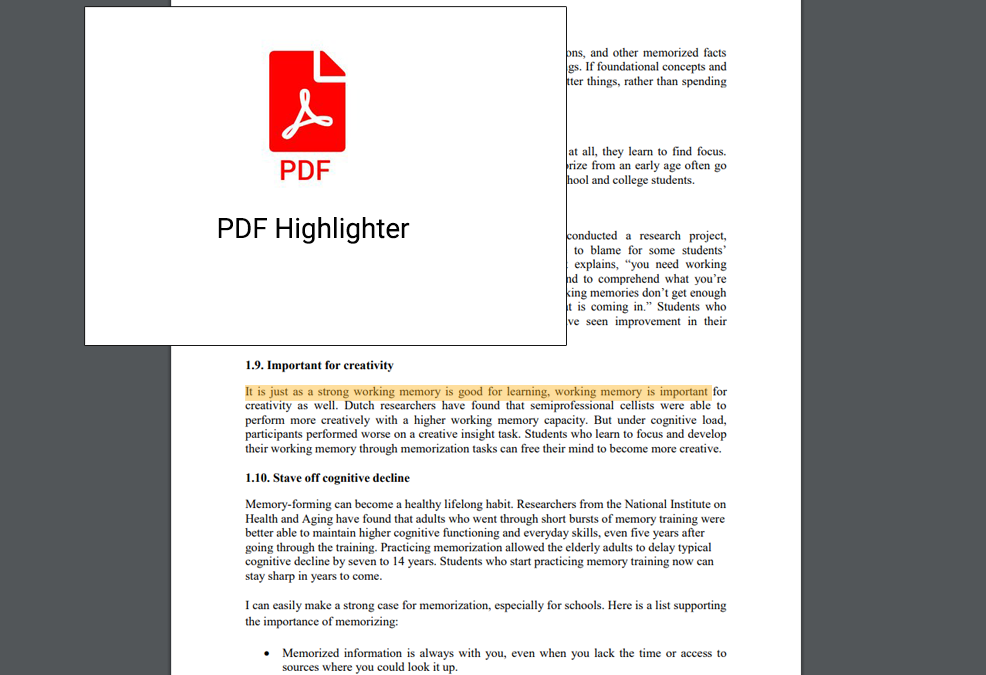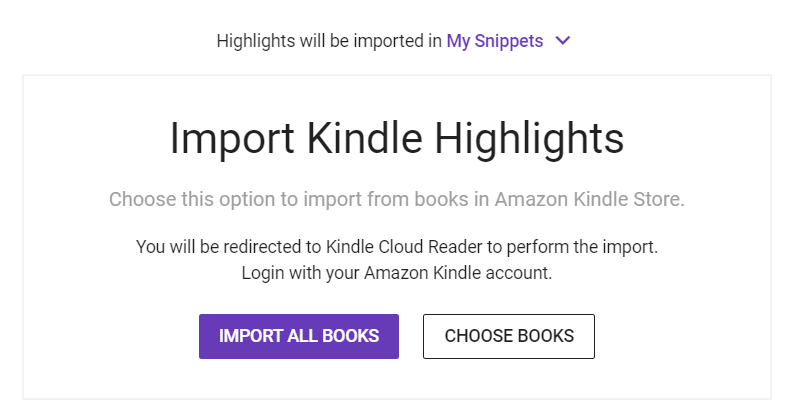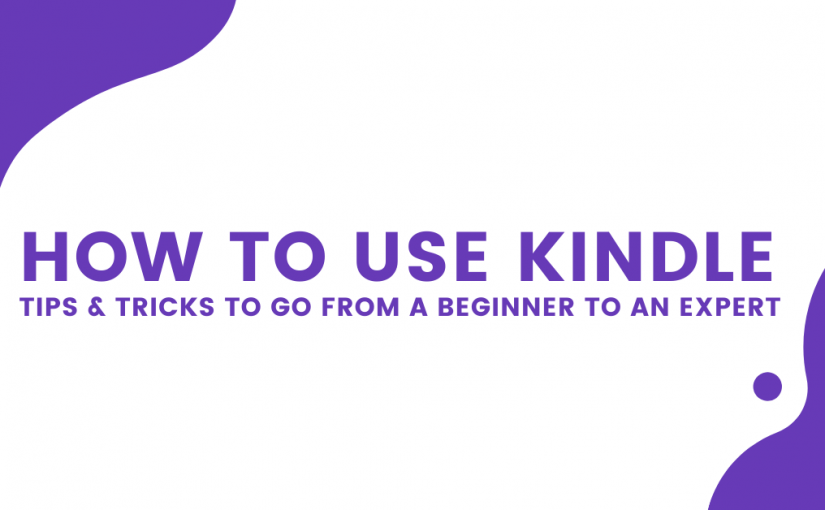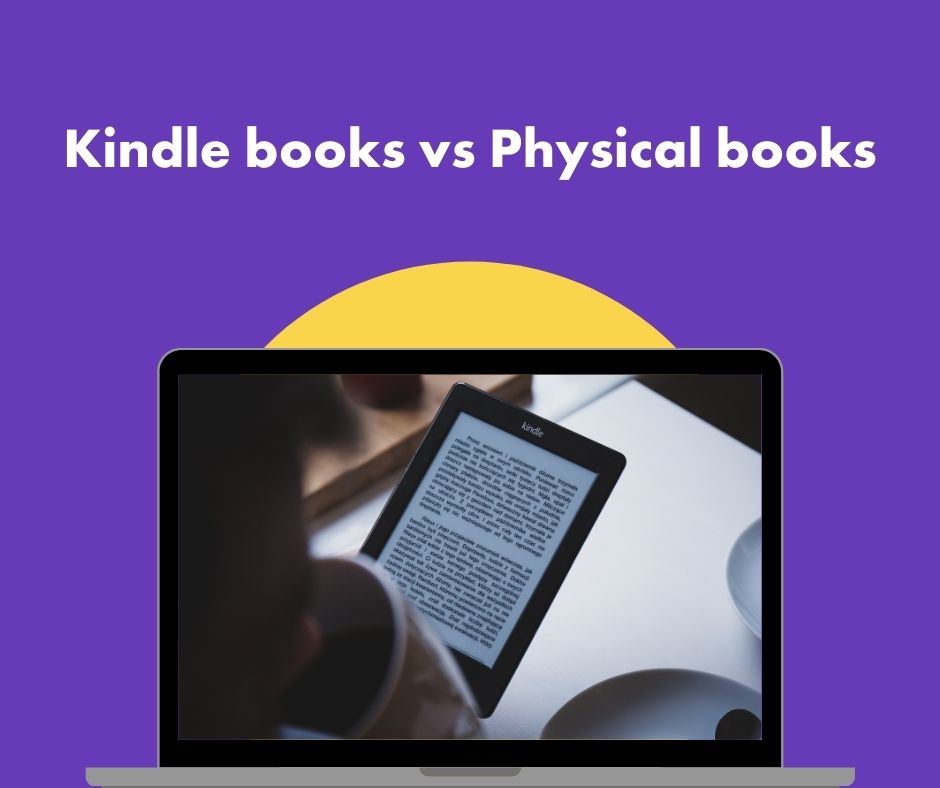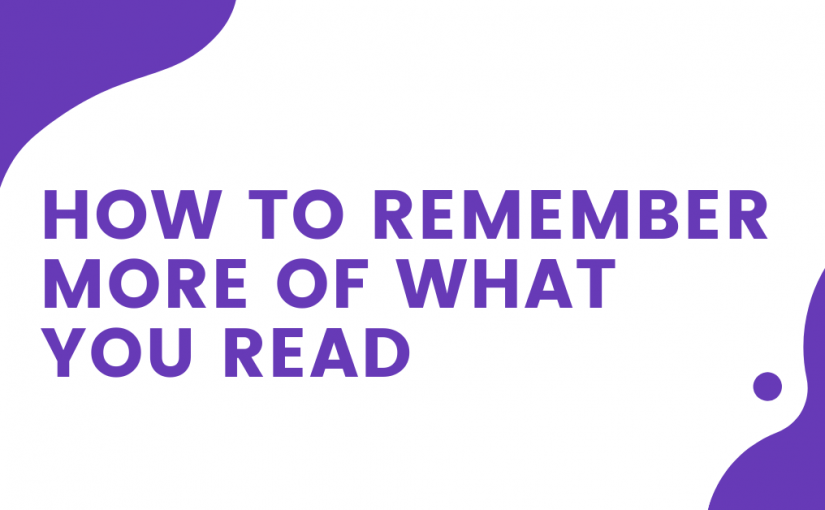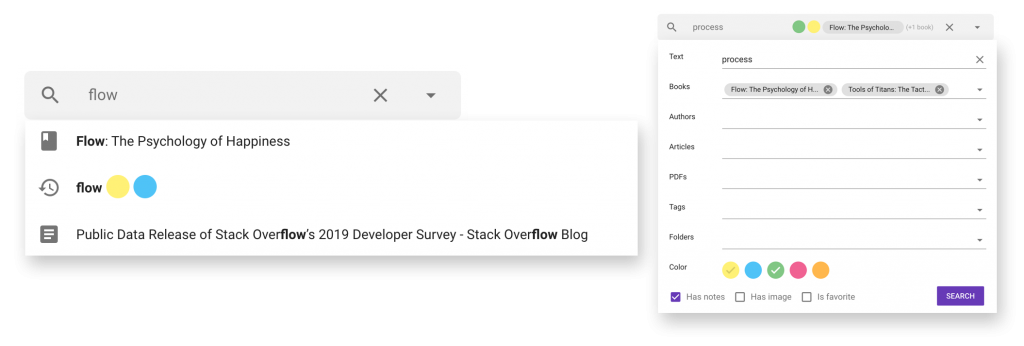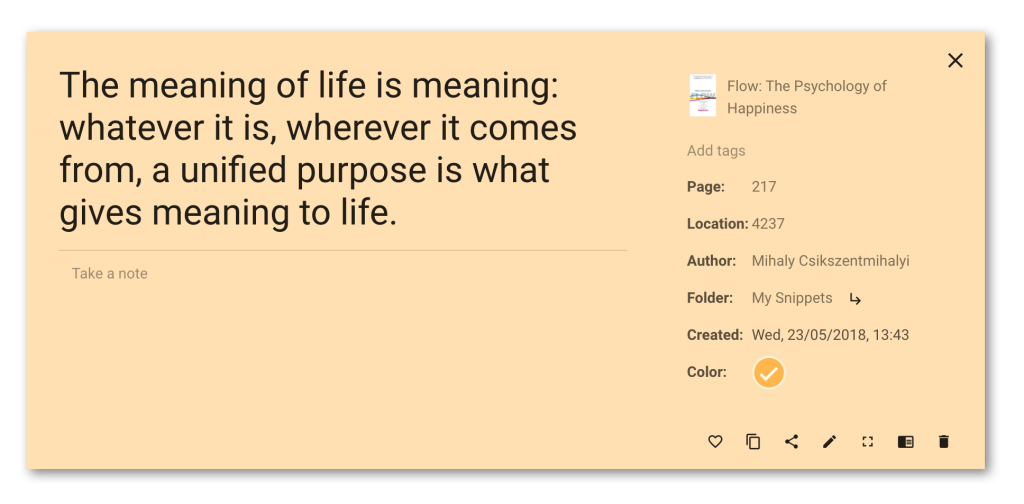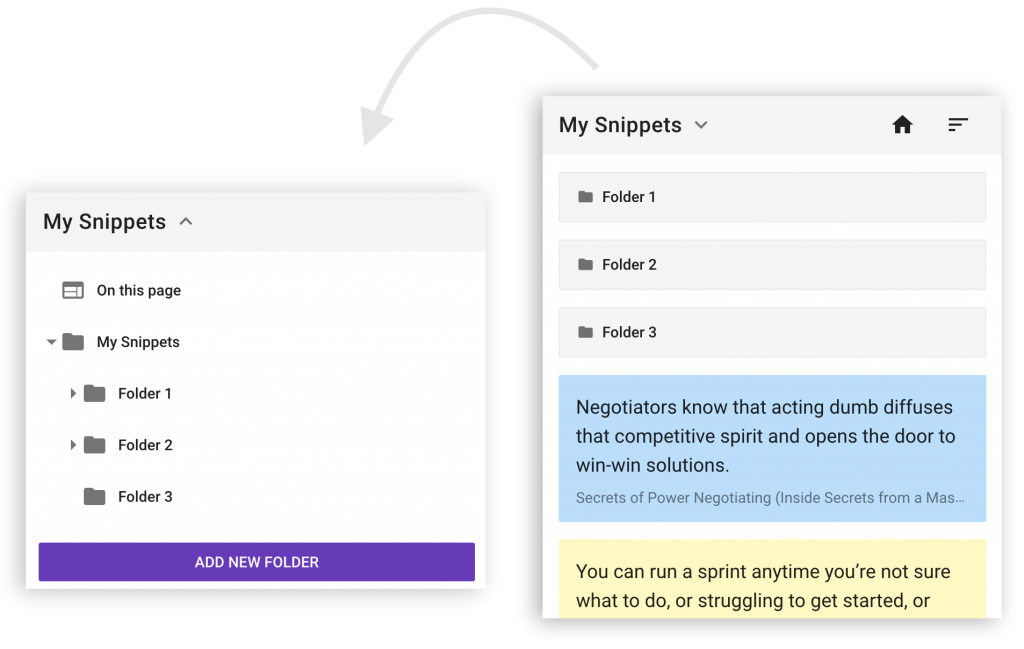How often do you find yourself underlining on and on, until you realize that the whole page is yellow?
You are not alone.
Many of us are going through this challenge sooner or later, and luckily scientists (and other students) have found strategies to avoid this. In this article, you will discover a short study guide to understand the differentiation between highlighting and note-taking, and how they can work together (or not) when you study.
Now, let’s explore how you can turn your study skills into a more effective note-taking before the next exam!
What is highlighting?
Highlighting is a studying strategy that should help you study in a more efficient way, by extracting the most important information pieces from a text. Marking a snippet of text can be easily done by using a pen on a piece of paper, or by using an online tool if we talk about web highlighting.
Students are supposed to mark down important points, such as dates, numbers, names, and other key points that can be easily spotted when reading the whole material.
You can avoid turning your whole page into a shiny yellow canvas by asking yourself a couple of questions:
- What’s your purpose? Know what you’re highlighting and why.
- What are the key categories of content that you need? Establish these and carefully pick a color-coding system for each section.
- How do you refine the information? Stick to that system above. If you decided to highlight only names & dates, then hold your hype to select any other word.
- How do you break the boring pattern? Highlight in different ways, by either opting to underline or highlighting the whole word.
Is it better to highlight or take notes?
Opinions are divided.
Some people say highlighting is overrated, and complicates our life, and that taking well-structured notes is a much better way when it comes to study tips.
We think that there is no right or wrong answer. Why highlighting and note-taking can’t live under the same umbrella?
These are different methods that help you study, and they should be treated individually, as each of them could bring other benefits.
How to highlight? Read. Think. Act.
To choose proper highlighting techniques, it is necessary to go through all the phases of highlighting, such as:
- Read the material carefully while being 100% focused on the story
- Try to connect the new information with facts that you are already aware of
- Place the new data in a broader context and draw the main themes
- Define your own system of underlining styles and highlighting colors by using the main themes
how strong the pop-out effect is for each annotation, and how effectively annotations can be used in combination with one another.
Does highlighting improve memory?
If there is one thing that no one can deny is that highlighting helps us improve our memory, especially the visual one. By carefully marking down key elements and reading again, students can take their understanding to another deeper level.
Additionally, if we “visually read” the same information multiple times it is more likely to recall that information because it becomes more familiar.
What are the pros and cons of highlighting?
The advantages
- Highlighting is a much quicker method because you just under
- Marking key concepts makes the text more visual appealing
- Highlighting draws our attention to the highlighted word, making it easier to read
The disadvantages
- It’s very easy to turn highlighting into mindless actions
- Students tend to highlight more and retain less information vs experts who only highlight text only from a few perspectives, and retain more
- Sometimes your highlights are not enough to recall the information so you have to read again the whole paragraph
Online highlighting vs offline highlighting
Students all over the world use highlighting pens to add a shade of color to their course materials, and improve their study techniques. Underlining words and hearing the pen stroking the paper are among the most satisfying sounds they recognize.
However, while digital life encapsulated more areas of our daily lives, studying also moved partially or fully into the online world. Now, there are a few online highlighting tools, such as Snippet that you can use for web and PDF highlighting.
Depending on the resources you have around, you can opt for one or another. While online highlighting helps us store more study notes along the way, offline highlighting, despite being more heavy to store, is available at any time even when internet outages might occur.
What color highlighter is best for memory?
Colors have a complex psychological wiring in the learning processes happening on our brain. However, yellow has been recognized as the most efficient color when it comes to highlighting information in the study process.
Yellow is a stimulating color that draws attention to the text or to the main point of attraction. Now, are you still wondering why all school buses are yellow? 😀
What is note-taking?
Note taking means to take out the main points, similar to the highlighting technique, by using a wide range of methods that organize the information in a systematic way based on your own notes. The process of taking notes after you read a piece of text includes also the processing of that information by rereading, annotating, or rewriting.
“Taking notes doesn’t simply mean scribbling down or marking up the things that strike your fancy,” say Walter Pauk and Ross J.Q. Owens in their book, “How to Study in College.” “It means using a proven system and then effectively recording information before tying everything together.”
Types of note-taking
- The Cornell Note Method – a systematic format for condensing and organizing notes without a complicated or intense effort. Once you write down your notes, use the left-hand space to label each idea or detail with a hint.
- The Outlining Method – represents a way to record information by listening and then writing down the main points based on a pattern and space indentation. The key concepts should be placed to the left, and more specific and detailed ones to the right.
- The Mind Mapping Method – Mind maps are a method that uses concentration skills and leads to note-taking formats that highlight each fact or idea to every other fact or idea. This is a graphic representation of content’s main points. It is a method that maximizes active participation, affords immediate knowledge as to its understanding, and emphasizes critical thinking.
- The Charting Method – Helps you structure your notes based on a table, especially if the information available refers to chronological facts.
- The Sentence Method – Write each new idea, fact or topic on a separate line, and counting down as you progress.
Does note-taking improve memory retention?
What are the pros and cons of note-taking?
The advantages
- Writing notes in your own words helps you focus on what you already know and check your understanding
- Note-taking requires attention while reading the material and filtering the whole information
- You can build a more complex study guide by using notes from other sources or from other classes to connect what you already know at a higher level
- You can chew on the information and transform it into different other formats
The disadvantages
- It requires more time and more focused thinking compared to simple highlighting actions
- It’s easy to start copying text directly from the textbook instead of taking a lot of time to write notes in your own words
- Students easily get into a lazy mood where they prefer simpler activities
Online note-taking vs offline note-taking
The act of note-taking is different from one environment to another.
Writing down the things we read or we copy from another place has been around with us since we started going to school. So, grabbing a piece of paper will always be a familiar activity to do when studying and processing information.
However, the online world brings a multitude of possibilities on how we can organize and process that information. Some of these opportunities are more automated, simpler or more fast, and they are available at a few clicks away.
If you highlight with a pen over a piece of paper, you feel them both, and you can check your notes afterwards more easily. Compared to when you highlight on your browser, no matter if you are using a laptop or a tablet, where you can quickly organize your highlights into folders, share it with your friends or transform into another piece of content.
What are the five R’s of note taking?
There are a few well-known steps that students can take in their study process, and among the first one it is to record the information.
- Record – Try to store visually or audio snippets of data from your lecture or from your books. If you need a helping document, then you can build a quick table to contain the most meaningful ideas.
- Reduce – As soon as possible, summarize these facts and ideas concisely in a separate column. Summarizing clarifies meanings and relationships, reinforces continuity, and strengthens memory.
- Recite – Describe the ideas as fully as you can by using your own words, and then check with the initial source what you have not remembered so well.
- Reflect – Draw out opinions from your notes and use them as a starting point for your own reflections on the course and how it relates to your other courses. Reflection will help prevent ideas from being inert and soon forgotten.
- Review – Spend 10 minutes every week in a quick review of your notes, and you will retain most of what you have learned.
To sum up the journey from above by, we hope that the differentiation between highlighting and note-taking became more clear now. We suggest you try both of them, applied as much it’s possible to your own study behaviour.
Either online or offline, highlighting and note-taking can live together under the same umbrella and be considered viable study tools to improve your learning process and note-taking techniques. If you have already read the whole article, I suggest you should go over Snippet and sign up for a free account to see how an online highlighting tool can help you.
Have you already tried highlighting in combination with note-taking techniques? Let us know your thoughts and experiences in the comments section below.
